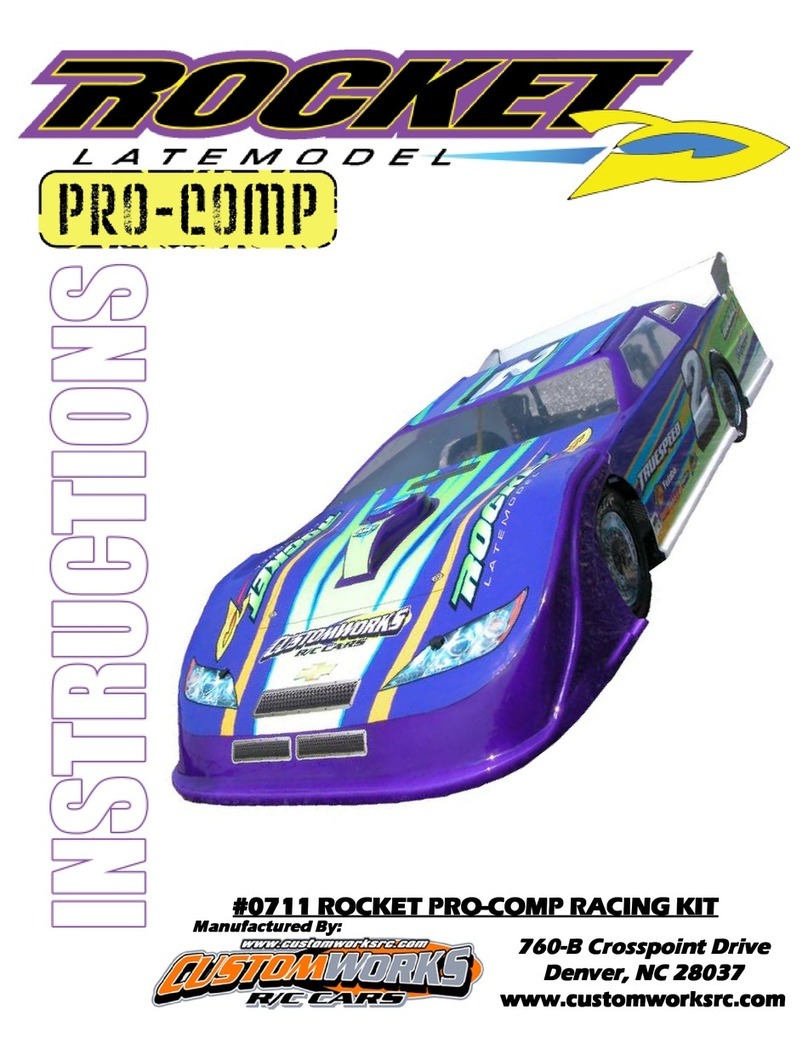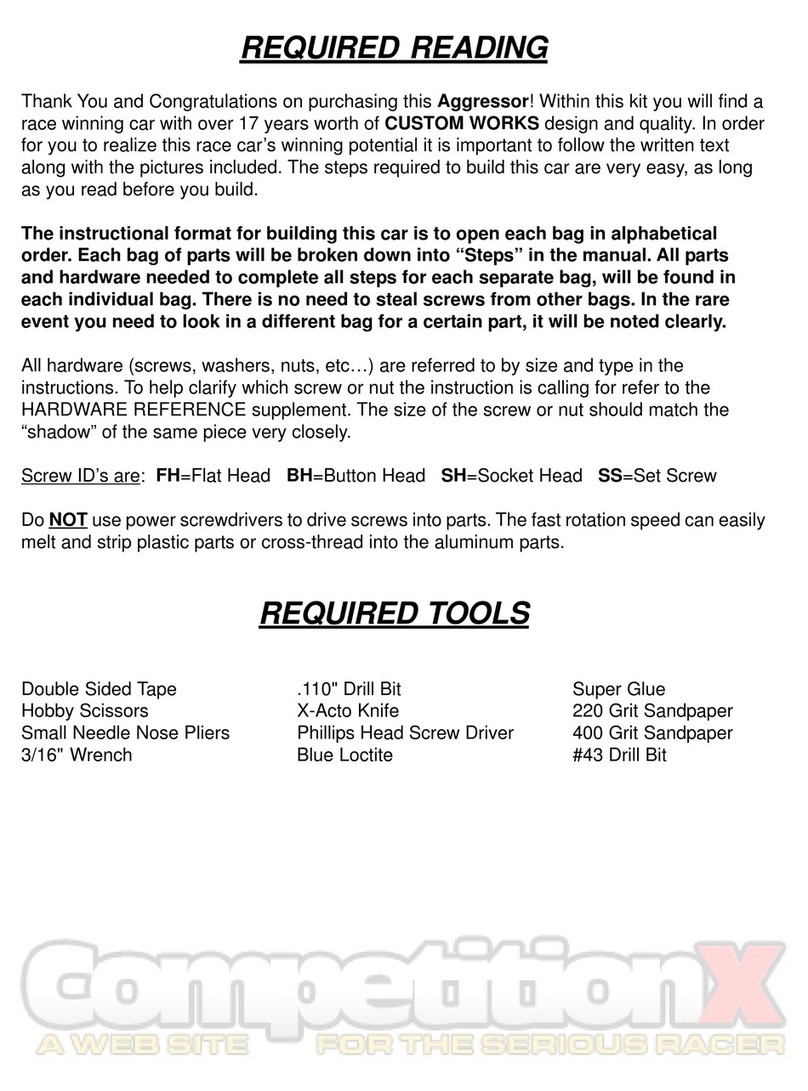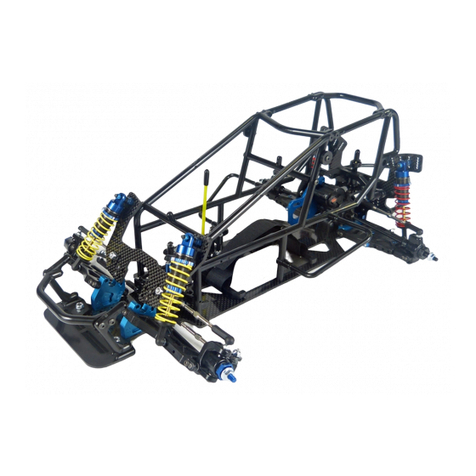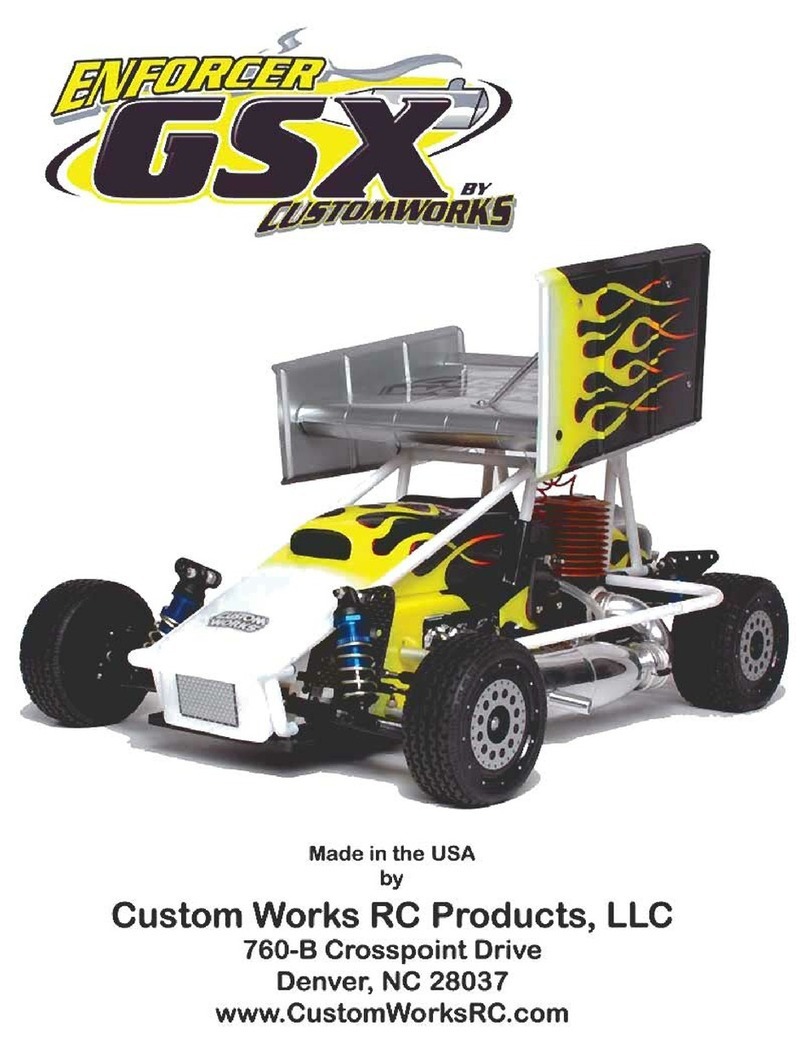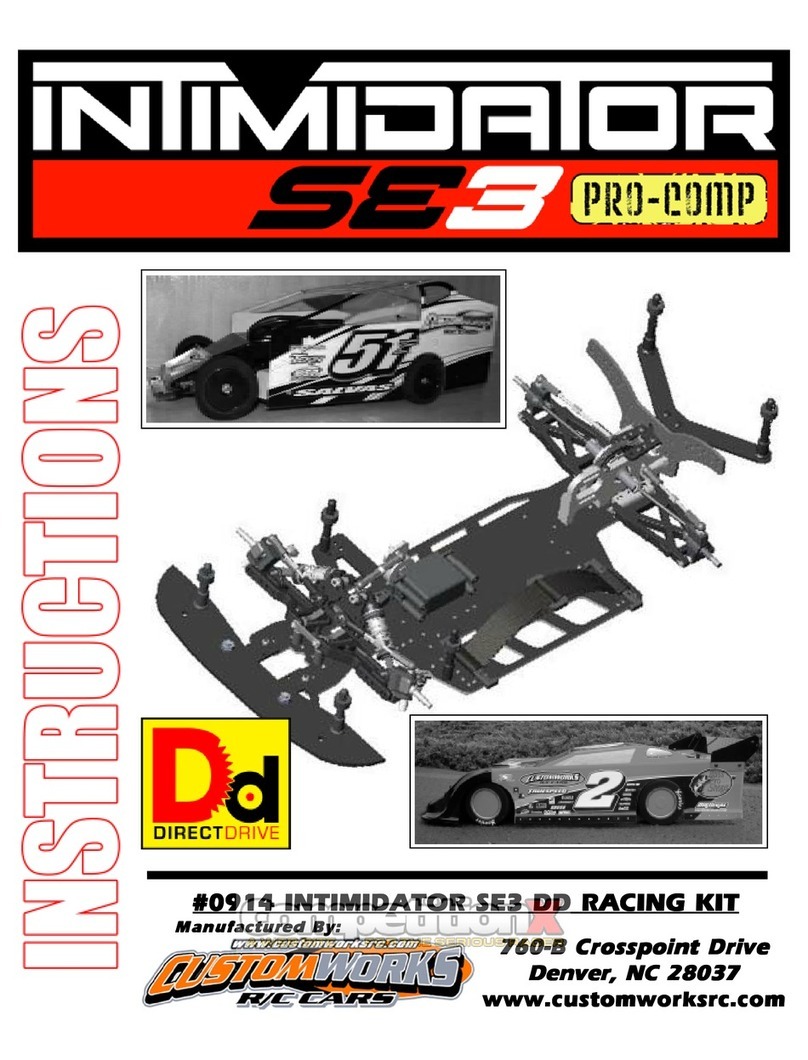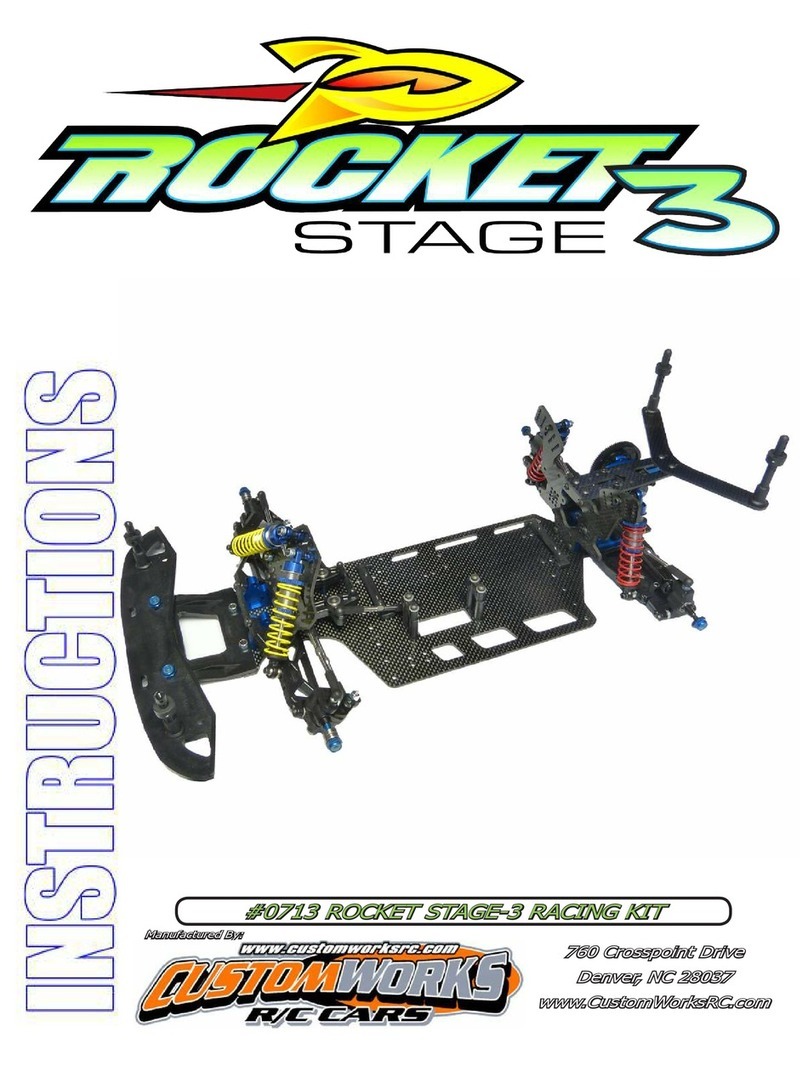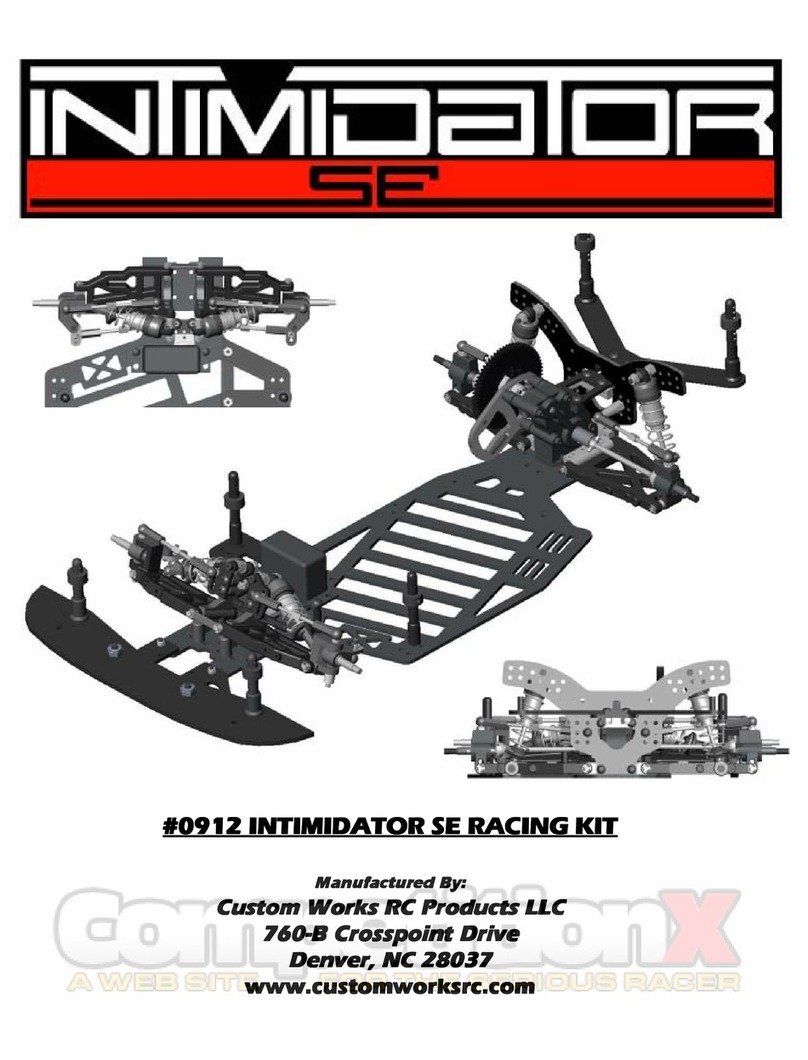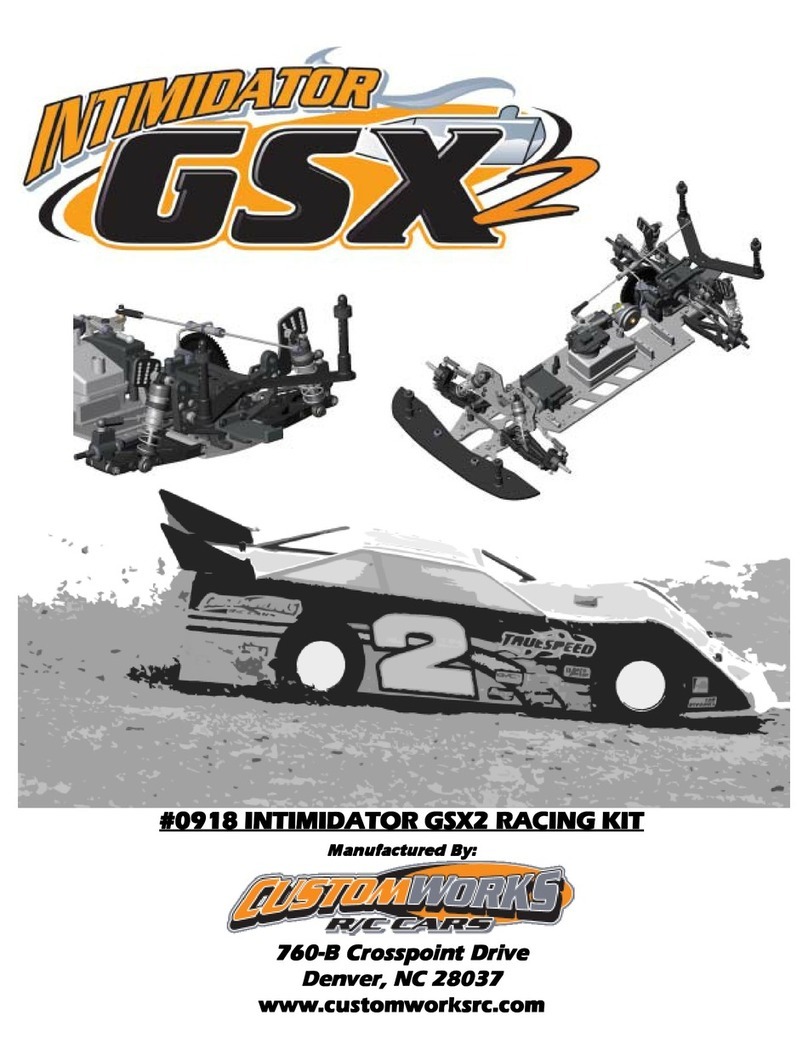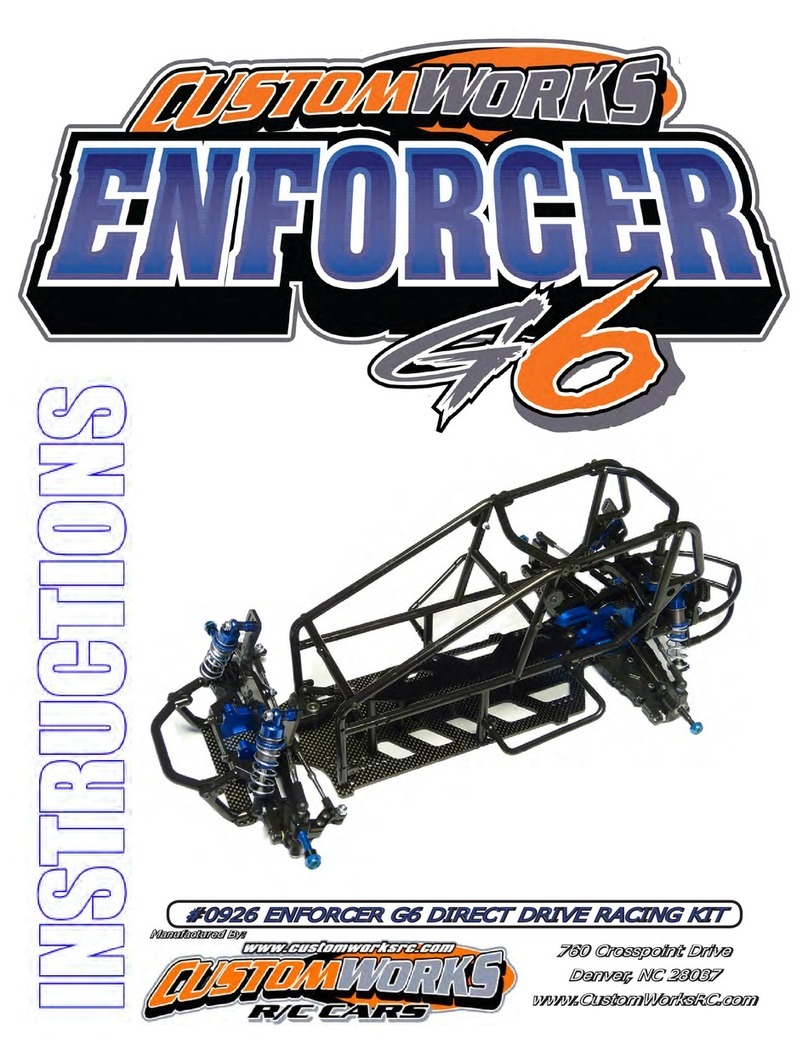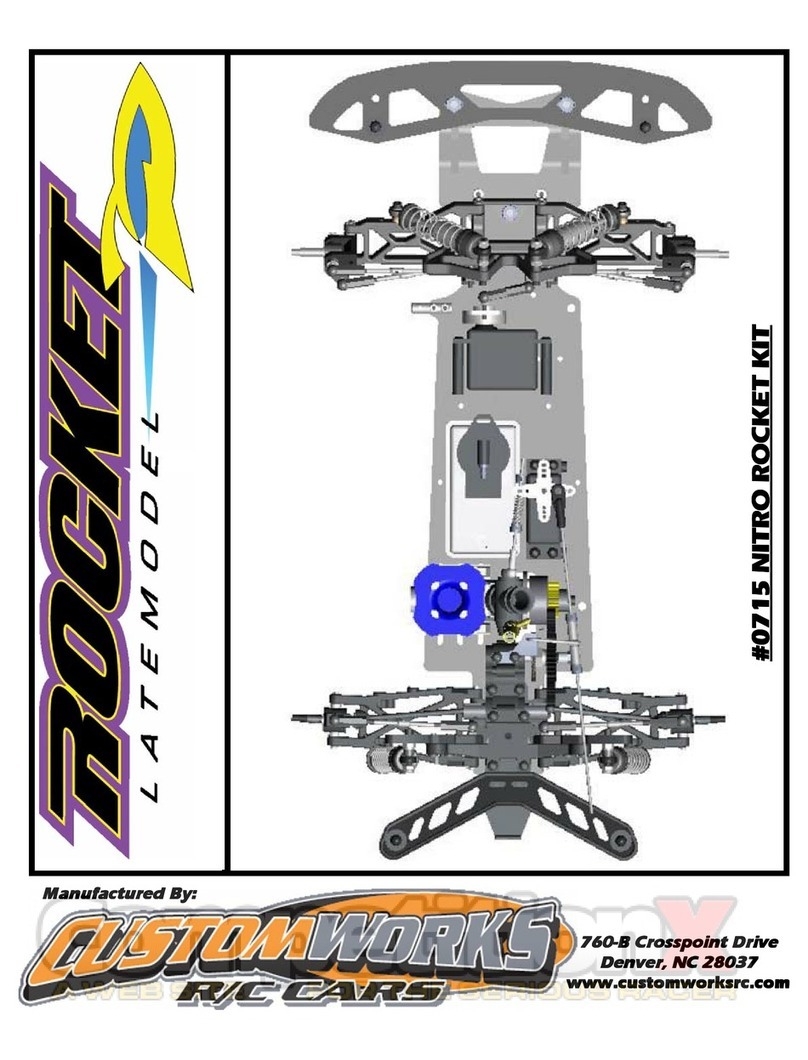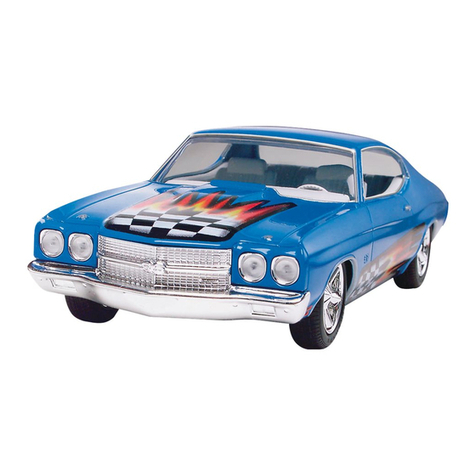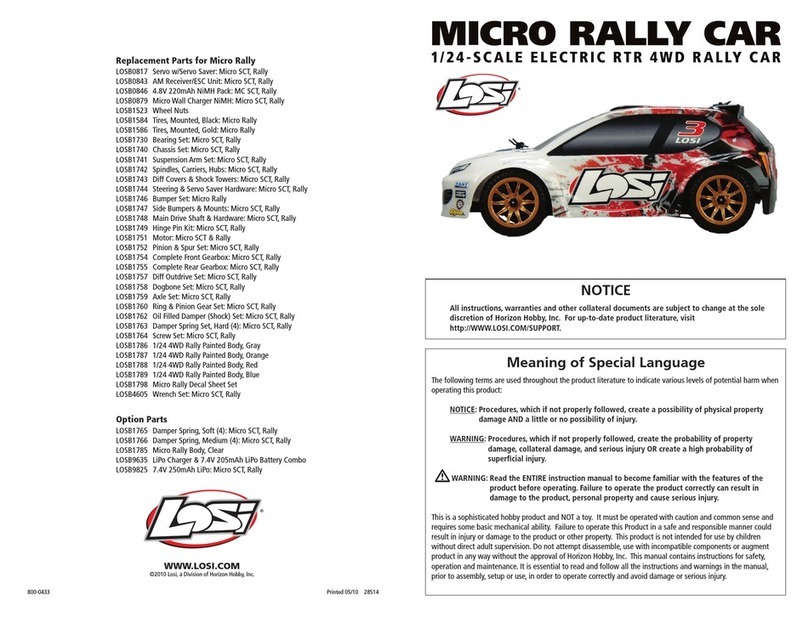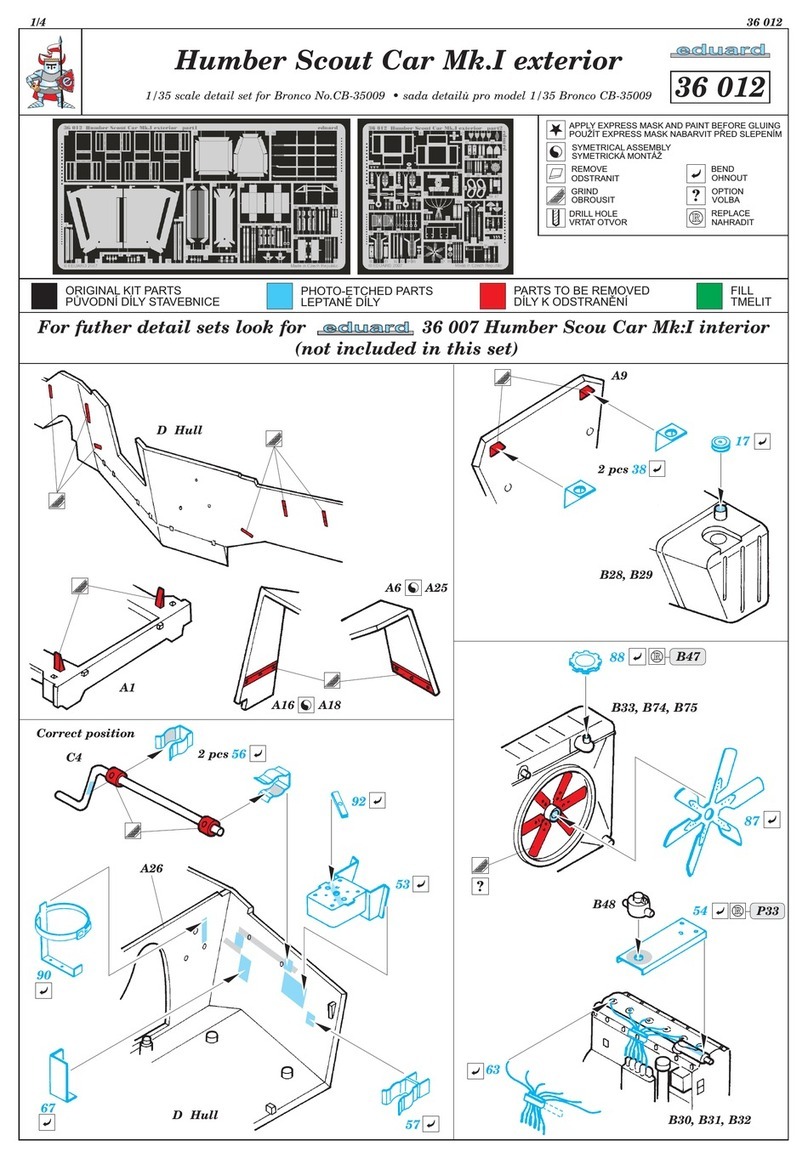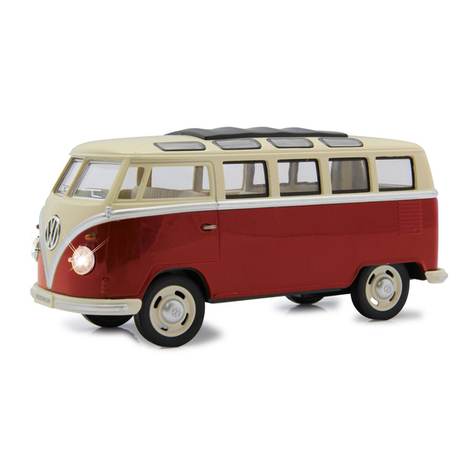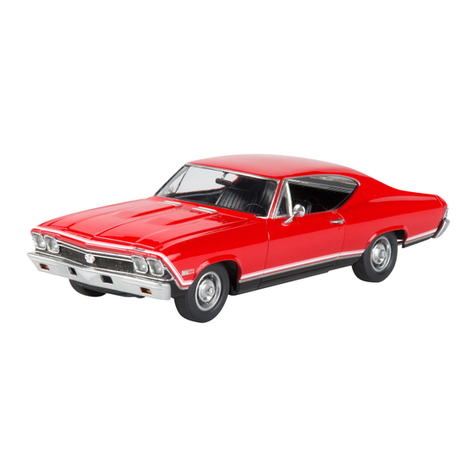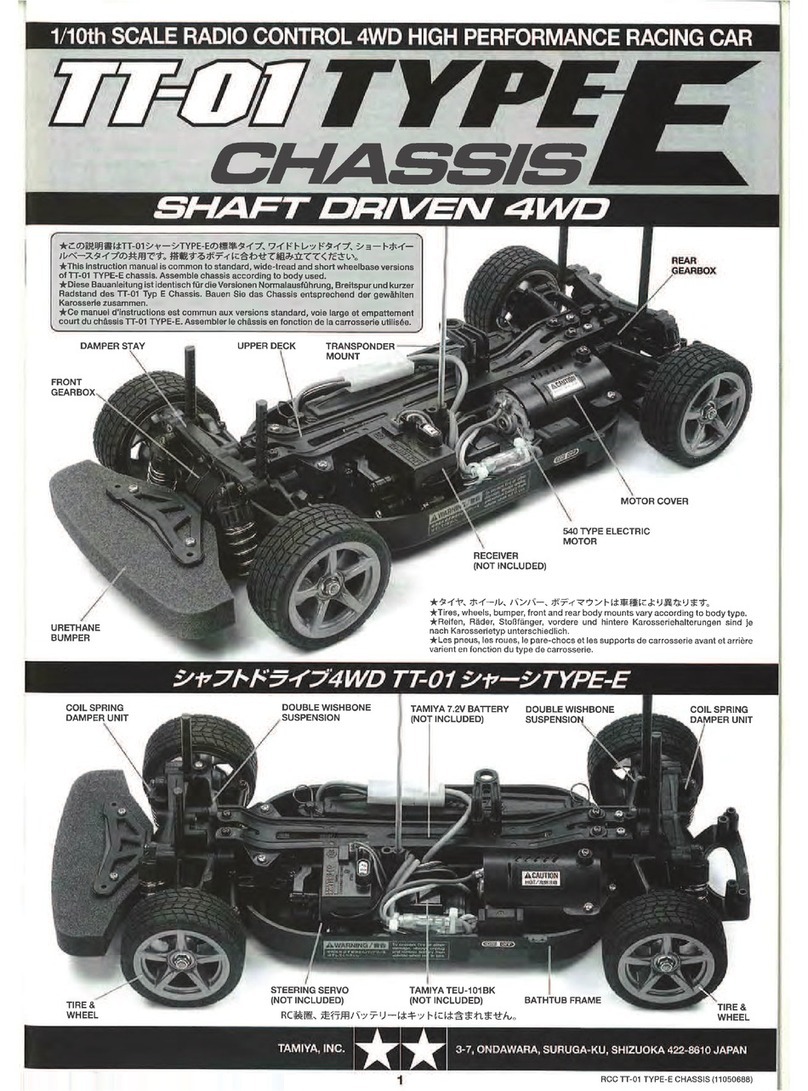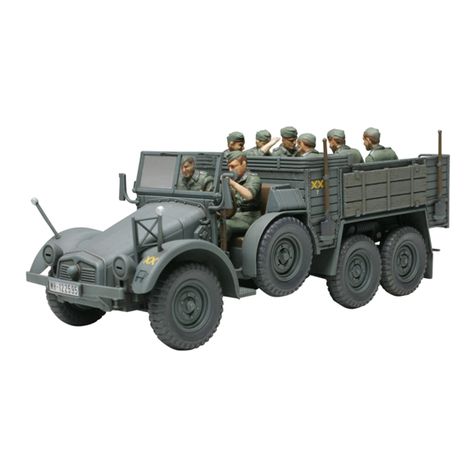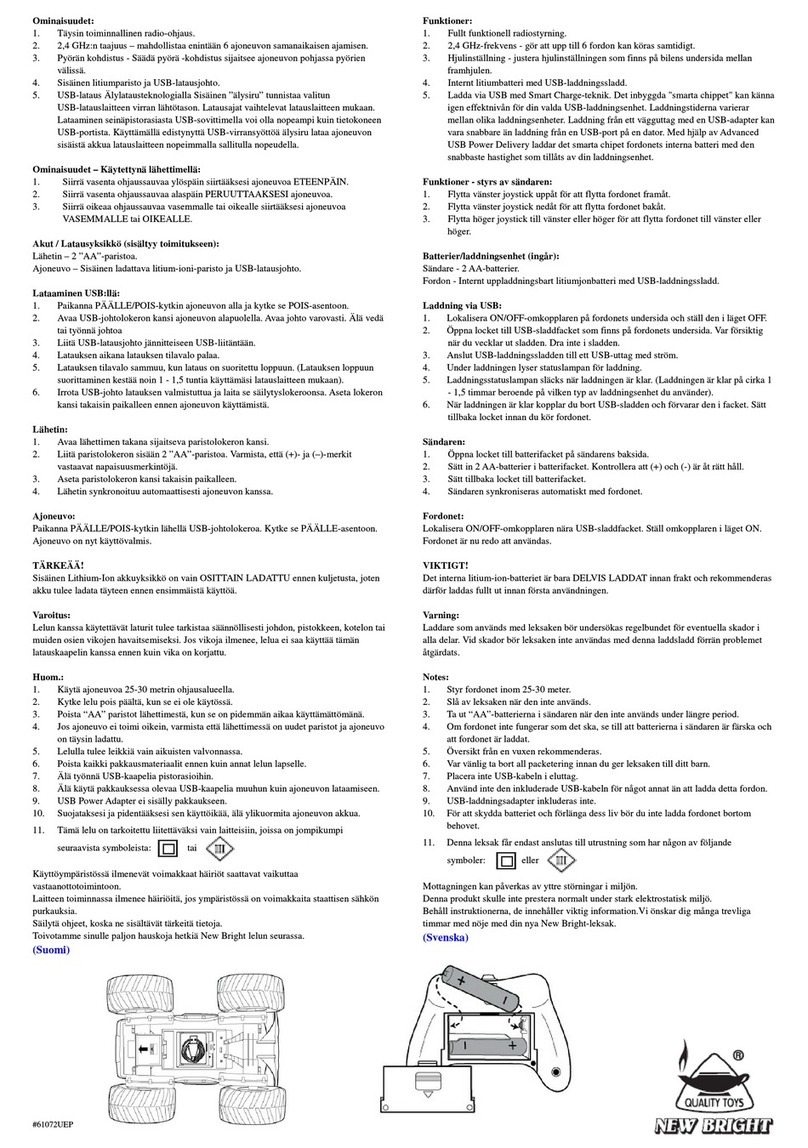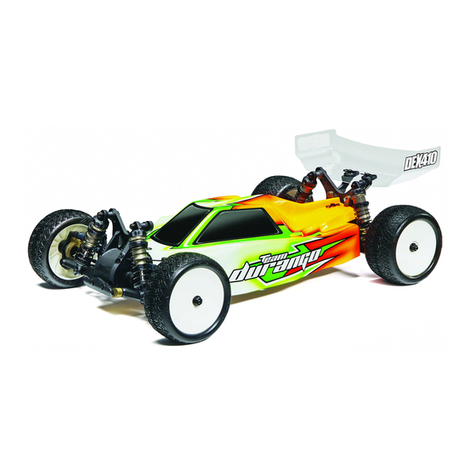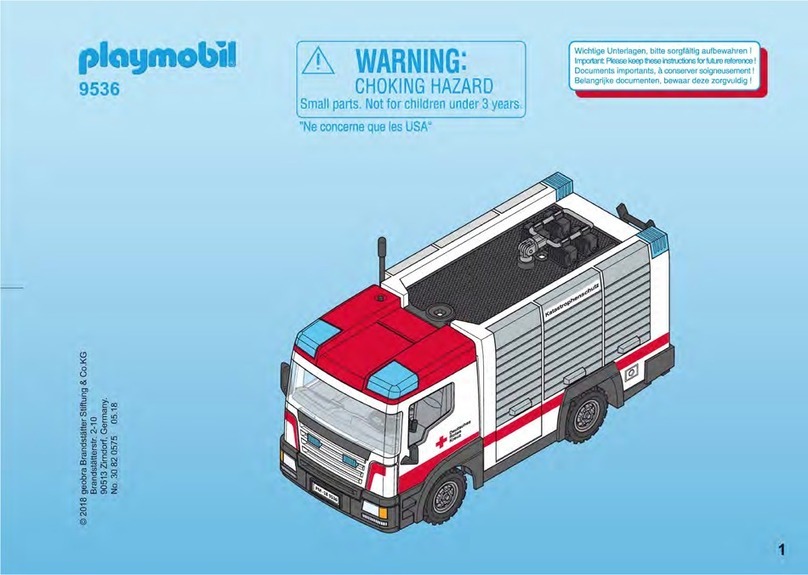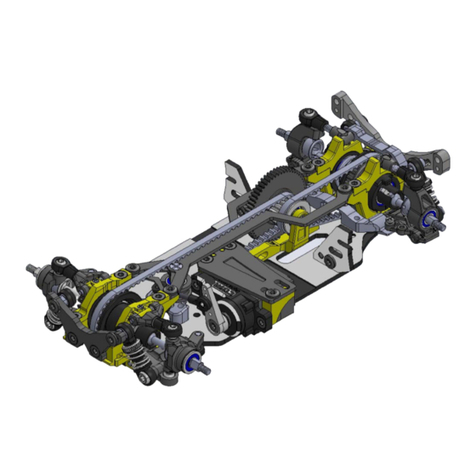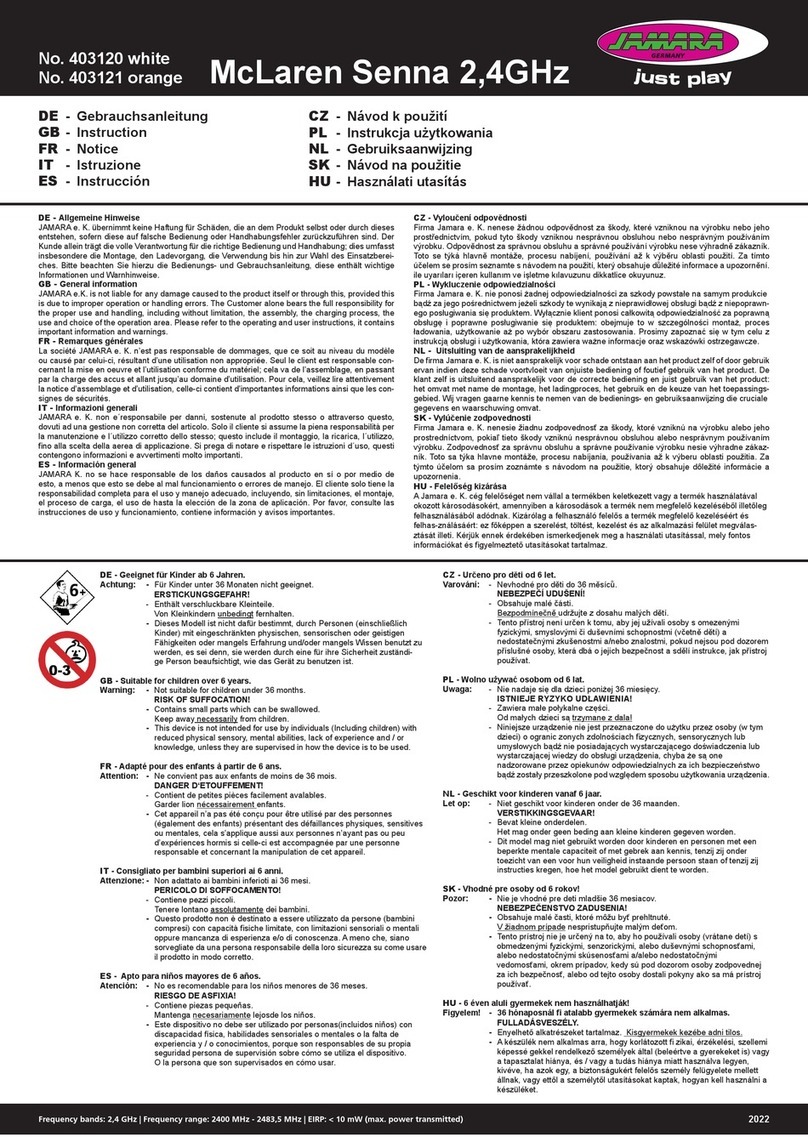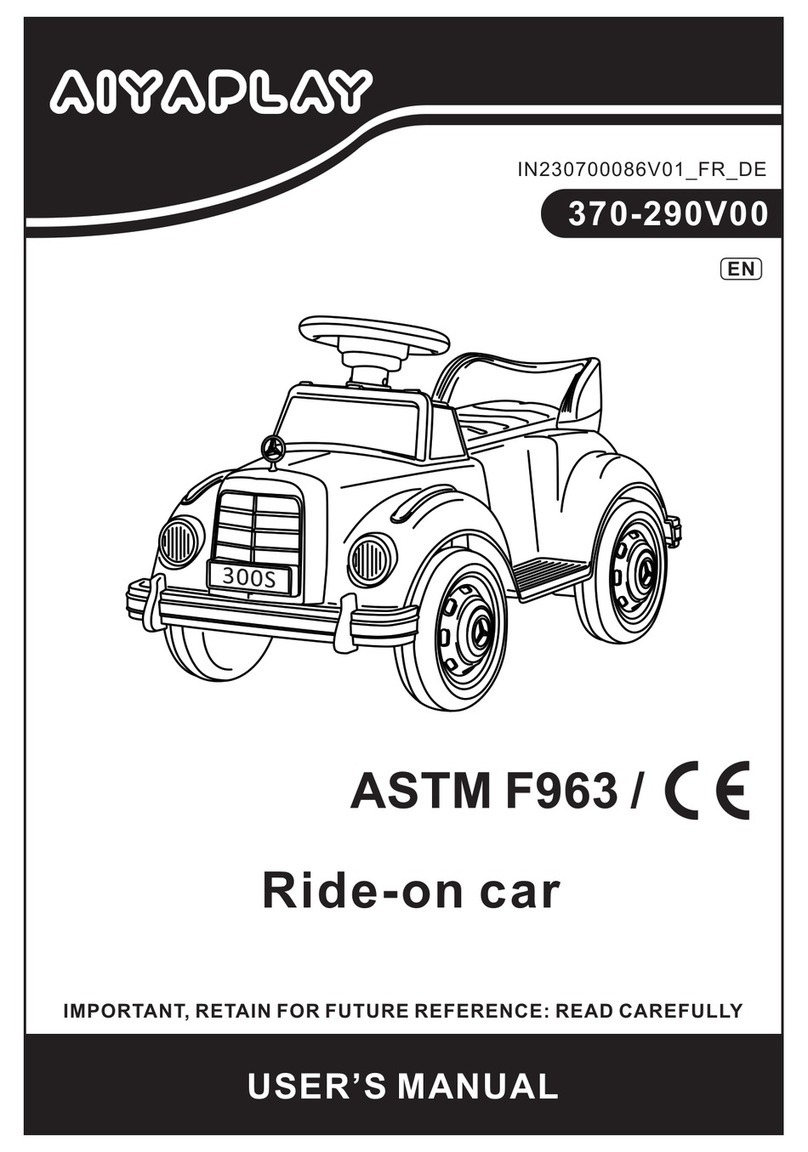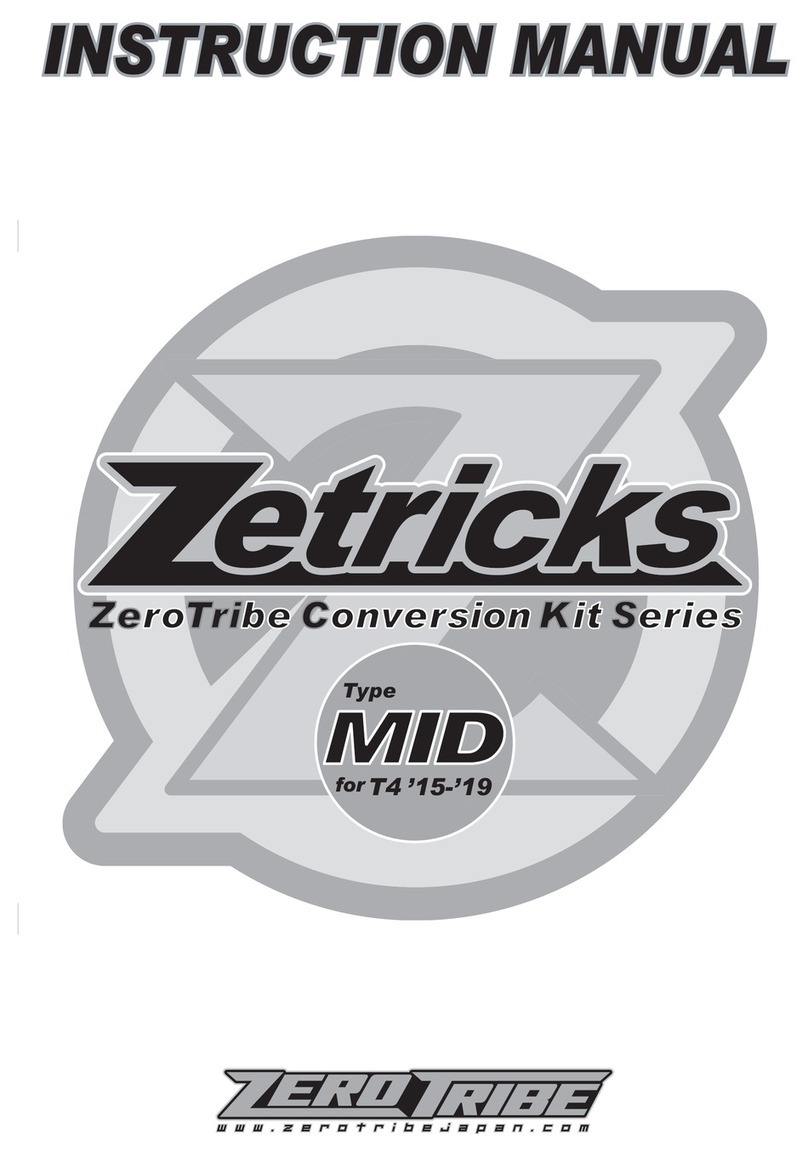
REQUIRED READINGREQUIRED READING
REQUIRED READINGREQUIRED READING
REQUIRED READING......
......
...UNDERSTAND THIS MANUAL!UNDERSTAND THIS MANUAL!
UNDERSTAND THIS MANUAL!UNDERSTAND THIS MANUAL!
UNDERSTAND THIS MANUAL!
Thank You and Congratulations on purchasing the DOMINATORDOMINATOR
DOMINATORDOMINATOR
DOMINATOR! Within this kit you will find a race
winning car with over 25 years worth of CUSTOM WORKSCUSTOM WORKS
CUSTOM WORKSCUSTOM WORKS
CUSTOM WORKS design and quality. In order for you to realize
this race car’s winning potential it is important to follow the written text along with the pictures included.
The steps required to build this car are very easy, as long as you read before you build.
The instructional format for building this car is to open each bag in alphabetical order. Each bag of
parts will be broken down into “Steps” thru the manual. All parts and hardware needed to complete
all steps for each separate bag, will be found in each individual bag. There is no need to steal screws
from other bags. In the rare event you need to look in a different bag for a certain part, it will be
noted clearly in the instructions.
Considering the various dirt or clay surfaces that Dirt Oval cars are raced on today, the Dominator has
been designed to be competitive on a wide array of dirt surfaces using the CustomWorks “Street-Trac”
style tires that come with the kit. The instructions will build the kit using the most verastale set-up Custom
Works has found in testing on different types of tracks, however there are various other suspension
configurations available to you that you may find more suitable for your local track. For updates and more
proven set-ups login to CustomWorksRC.com.
All hardware (screws, washers, nuts, etc…) are referred to by size and type in the instructions. To help
clarify which screw or nut the instructions are calling for refer to the parts call-out accompanying each step.
The size of the screw or nut should match the “shadow” of the same piece very closely.
Screw ID’s are: FHFH
FHFH
FH=Flat Head BHBH
BHBH
BH=Button Head SHSH
SHSH
SH=Socket Head SSSS
SSSS
SS=Set Screw
BUILDING TIPS:BUILDING TIPS:
BUILDING TIPS:BUILDING TIPS:
BUILDING TIPS:
-Using some type of thread locking fluid is suggested for all parts where metal screws thread into other metal
parts. We suggest using a lite setting strength thread lock for the reason you may want to take the screw out
one day. Remember it only takes a very small amount to secure the screw.
-Composite plastic parts are designed to fit and may be tighter than desired when brand new. It should be
known that these parts will free up with racing the car fairly quickly. Also these parts have great strength and
durability, however the shock resistance is reduced greatly when operating in cold climates.
-Do NOTNOT
NOTNOT
NOT use power screwdrivers to drive screws into parts. The fast rotation speed can easily melt and strip
plastic parts or cross-thread into the aluminum parts.
-Lightly sand the edges of graphite pieces using a medium grade sandpaper to avoid splinters. Run a
thin bead of Super Glue around the edges to give pieces greater durability.
SUGGESTED TOOLSSUGGESTED TOOLS
SUGGESTED TOOLSSUGGESTED TOOLS
SUGGESTED TOOLS
400 Grit Sandpaper Wire Cutters Blue Loctite
Hobby Scissors X-Acto Knife 3/16" Wrench
Small Needle Nose Pliers Phillips Head Screw Driver CA Glue
